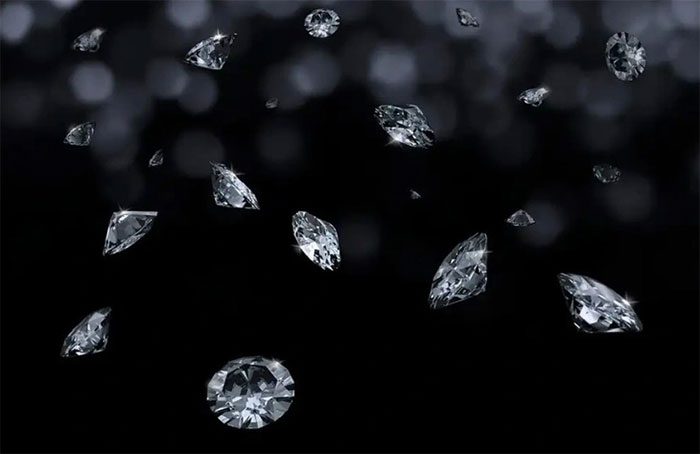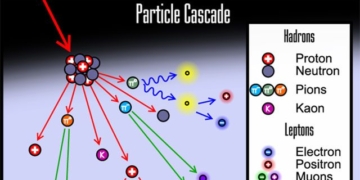Scientists Draw Conclusions After New Research on Diamond Rain Formation Conditions.
According to IFL Science, laboratory experiments indicate that sparkling diamond rain occurs at lower temperatures and pressures than previously thought.
This suggests that diamond rain could become more common, not only in our Solar System but also elsewhere in the universe. It may also impact the magnetic fields of planets.

Diamond rain could fall on a large number of exoplanets – (Image: SHUTTERSTOCK).
Previously, researchers created a polystyrene film (a type of flexible polymer). They then exposed it to high-intensity optical laser beams at 2,200°C to generate shock waves within the plastic, leading to the formation of diamonds.
The research team also made carbon compounds react with oxygen under extreme pressure conditions to produce diamonds.
However, the researchers now realize that they can create these diamonds at lower temperatures and pressures, meaning they will remain in the atmosphere longer before sinking deeper into the planets.
Moreover, the magnetic fields of Uranus and Neptune are asymmetrical, unlike Earth’s, and are generated from conductive layers deep inside the planets. The presence of diamonds, which carry gas and ice, could potentially influence the magnetic field as they pass through these conductive layers.
Mungo Frost, the lead author and scientist at the SLAC National Accelerator Laboratory, stated: “Diamond rain on icy planets presents us with an intriguing puzzle to solve: it provides internal heat and transports carbon deeper into the planet. Does this significantly affect the properties and composition of the planet, as well as influence the generation of their magnetic fields?”
“This groundbreaking discovery not only helps us gain deeper insights into icy planets but also holds significance in understanding similar processes on exoplanets beyond our Solar System,” said Siegfried Glenzer, director of SLAC’s High Energy Density Science department.
The research was published in the journal Nature Astronomy.




















































